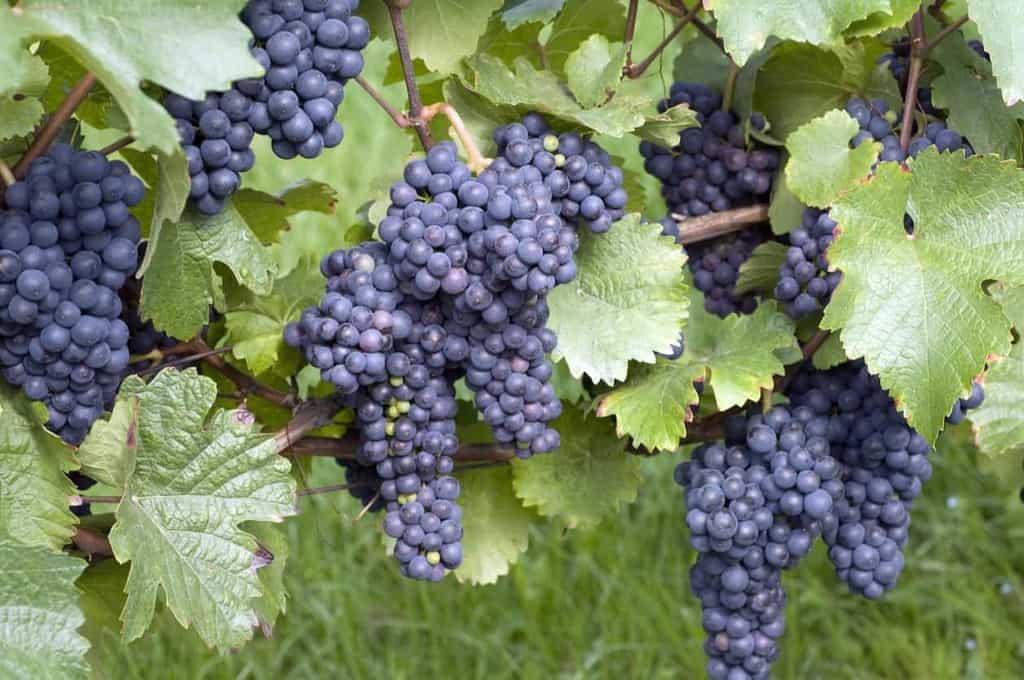Going Beyond Riesling in the Finger Lakes
When we think of Finger Lakes wines, Riesling and Cabernet Franc immediately come to mind. These two can be considered the flagship grapes of the region since they can tell you a lot about the winemaker’s individual approach to production. However, many winemakers are experimenting with different grapes and that is what sets them apart from the other wineries. Some varieties, like Blaufränkisch, are slowly gaining in popularity and are becoming a staple in the region (check out Adrian’s article on the subject if you want to learn more about that specific wine), others are made by only a handful and haven’t quite caught on.
Here are some unique wines in the Finger Lakes region you need to seek out.
Albariño
The grape Albariño is usually found in Northwest Spain and Portugal and is particularly popular along the coast. Owing to its high acidity and citrus flavors, this bright, dry wine is a perfect complement to seafood dishes and for sipping throughout the summer. However, it should be noted that it does not age as well as many other whites from the region and there’s a tendency for this grape to be extremely acidic, though this is tempered when it’s served slightly warmer than normal for white wines.
The first winery producing an Albariño in the Finger Lakes was Billsboro Winery on Seneca Lake. They source these grapes from Sawmill Creek and produce this stunning wine most years. Their take on the Spanish classic is citrusy and bright, as expected, with some notes of melon and mineral. You can also try it at Fulkerson Winery.
Rkatsiteli
Pronounced “Are-Cats-Sa-Telly,” this wine is famously produced in the country of Georgia, where it is usually made as a skin-fermented wine aged in clay pots called quervi. These grapes have been grown there since 3000 BCE and continue to be a popular grape in Eastern Europe. It’s used to produce everything from dry table wines to sweet dessert liquors. It was first planted in the Finger Lakes by Dr. Konstantin Frank, the man himself, in the 1950s and 60s.
Dr. Konstantin Frank continues to produce this wine in two different styles. The first is aged on the lees, giving this wine a creamy texture that balances out the herbaceous and tea leaf notes. They also produce a skin-fermented version aged in clay amphora like those classic to Georgia. The only other vineyard producing this grape is McGregor Vineyard, who, in a double whammy of uniqueness, is blending theirs with a Romanian grape locally referred to as Sereksiya Rosé to lighten the weighty mouthfeel and increase the fruit.
Saperavi
Another Georgian wine, Saperavi translates to “paint, dye, or give color,” which is appropriate once you see it in the glass. It is a dense purple wine that can appear almost fuschia at the edges. Unlike most red grapes that can be made into a white-colored wine, when Saperavi is pressed it releases a bright pink wine, which also means no skin contact is needed to make it into a rosé.
Standing Stone Vineyards put Saperavi on the Finger Lakes map, embracing and celebrating this unique varietal. Smoky, earthy, full of black berries, and high in acid, this wine is made for long term aging. It is also being produced as a single varietal at Dr. Konstantin Frank, and in a blend at McGregor Vineyard.
Zweigelt
Bright and tart with cherry, licorice and chocolate notes, this Austrian wine is a cross between Blaufrankisch and St. Laurent, a grape that tastes like Pinot Noir. Given the flavors, it wouldn’t be surprising if we began to see more of this wine in the region.
Currently there are three wineries producing this sour cherry gem: Three Brothers Winery, who makes an estate grown vintage as well as a blend with Cabernet Sauvignon; Fulkerson Winery, with theirs emphasizing the fruit notes; and Nine Four Wines, where they are taking a lighter approach to the grape.
Leon Millot
This a French hybrid grape is named after the individual who ran the nursery where it was produced. The grape is suited to cooler climates and produces wine with a richer color, so it is often added to blends to deepen the hue.
In the Finger Lakes, you’ll find this grape at Keuka Lake Vineyards, where it tastes like pepper, earth and dark berries. The grapes come from the Fournier vineyard, named for its original caretaker Charles Fournier who helped revolutionize wine in the Finger Lakes. This award-winning wine is a light and fresh, alternative red. You can also find it in a zippy Pet Nat at Barry Family Cellars.
Looking for more unique wines? Red Tail Ridge Winery serves up options like Teroldego and Dornfelder, Knapp Winery has a Siegerrebe, and we know you will find plenty more including some native grapes like Delaware and Catawba. Our advice: get out there and explore. The Finger Lakes has so much to offer and half the fun can be making the discoveries yourself.
More Ways To Explore The Finger Lakes
5 Amazing Seneca Lake Wineries To Visit If You Love Dry Red Wine
Barnstormer Winery – A Unique Approach To Winemaking in the Finger Lakes
5 Amazing Seneca Lake Wineries To Visit If You Love Dry Red Wine
3 Historic Wineries To Visit on Kueka Lake

[…] Going Beyond Riesling in the Finger Lakes […]